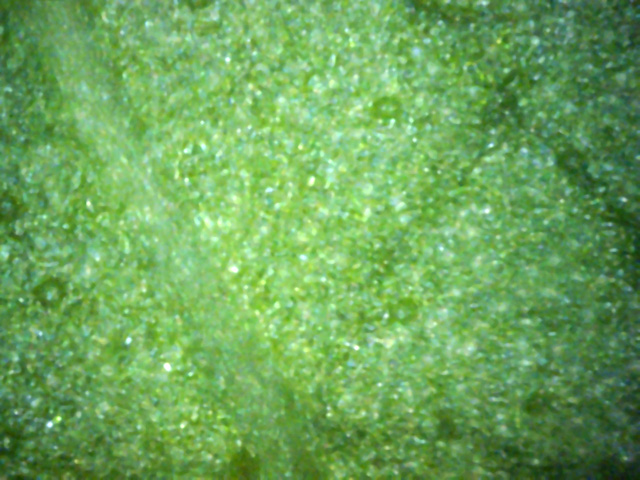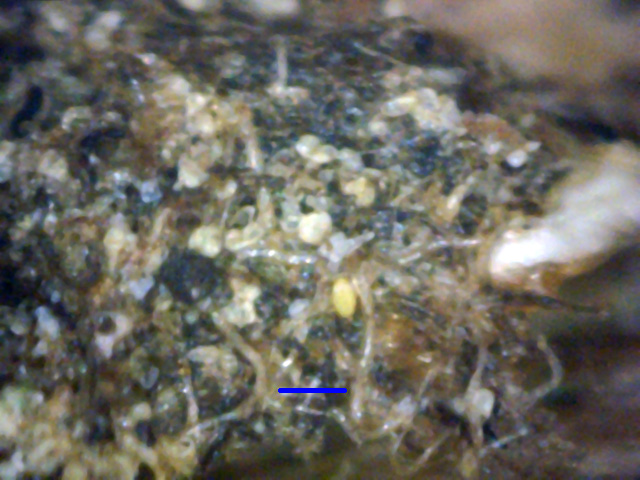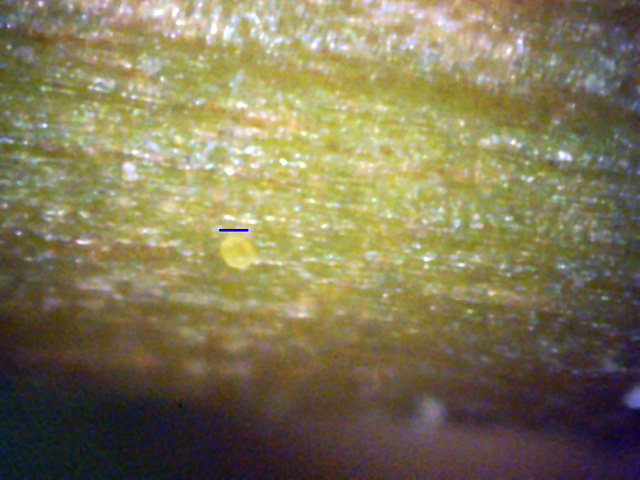
1
Healthy lilac twig surface at 400x. There is only one young yellow spore present.
Note the blue 50μm blue scale bar above it.
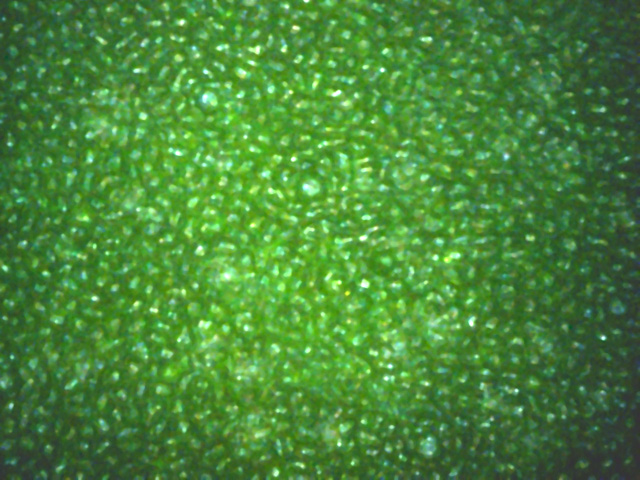
3
Healthy lilac leaf top at 400x. This leaf and the one in L1-2 were very flat
and a deep green in color, and simply looked healthy.
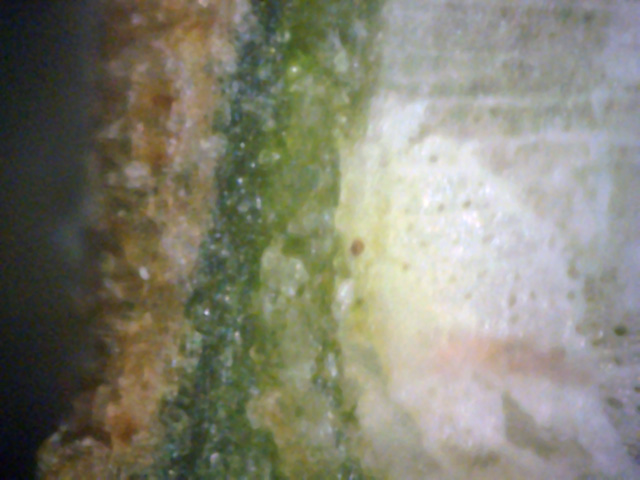
4
→
←
Cross-section of a twig having diseased leaves (400x).The black arrow shows normal heartwood. The red arrow shows the center of a white canker growth that is spreading
into the heartwood.
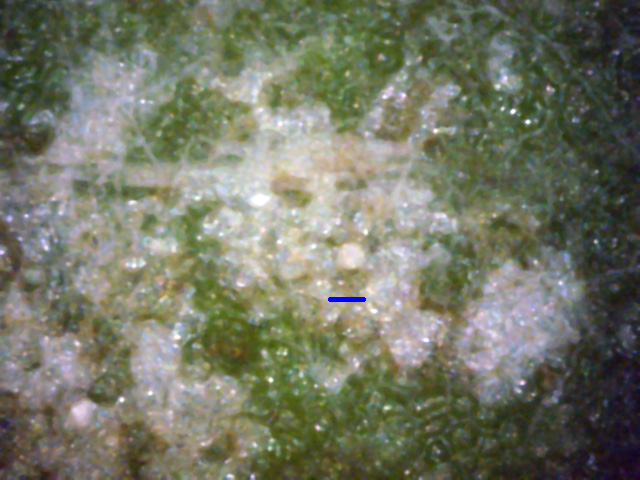
5
The bottom of a diseased leaf (400x), showing a white canker growing within the
leaf. There is a spore almost in the center of the canker, directly above the the 50 μm
scale bar.
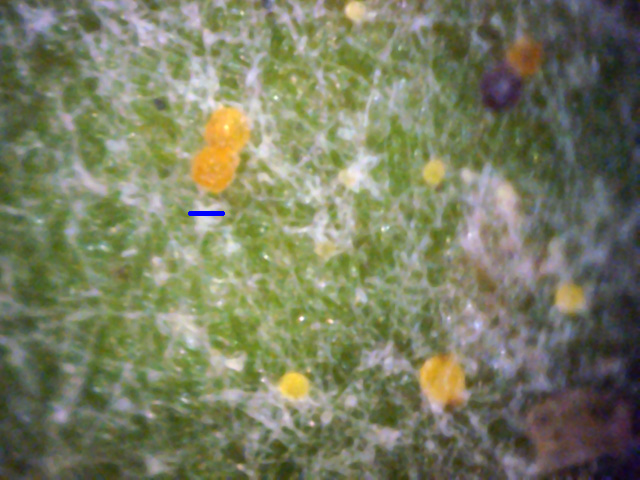
6
The top of a diseased leaf (400x), showing an abundance of hyphae, and lots of yellow objects
which look like spores.
There is also a curious black object.
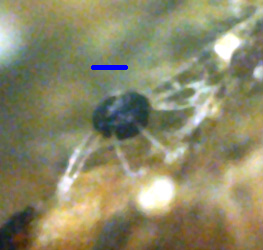
8
I found this strange object on the surface of diseased twig bark.
The translucent filaments seem to radiate from the object. This same type of object
is often found on other trees infected with white canker. (400x - 50μm scale
bar)
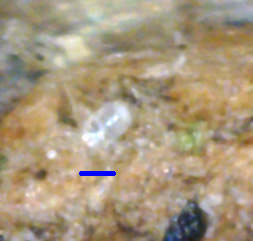
9
This oval translucent white object is actually a tiny insect! I caught it crawling
around, presumably foraging for food. The 50 μm blue scale bar shows how tiny it
is!
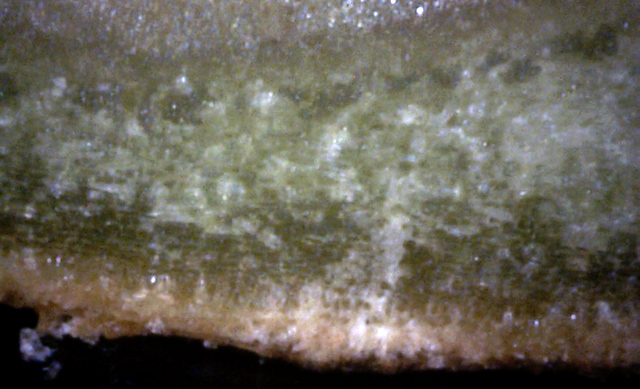
10
The white canker material is fairly diffuse within the sapwood. Here a ray of it
extends down into the bark. The "frothy" material at the far top is the pith of
this twig, which is about 1/8 inch in diameter. (400x)
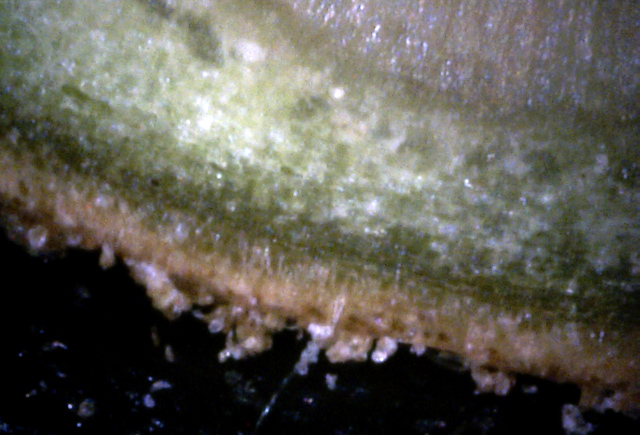
11
Here the inner bark is a cleaner, but there is more white canker debris on the
outside of the bark. (400x)

12
A leaf cross-section showing a young spore growing out of the bottom of the
leaf. Note the bulge of the leaf at this point, which is apparently due to the
spore's buried supporting "root" structure. Also, most of the canker seems to be
associated with the leaf bottom. (400x)

13
Not only has canker material infused the lower part of the leaf here, but a
spore and hypha are also growing inside the leaf. The upper part of this leaf
here has pretty much been destroyed. (400x)
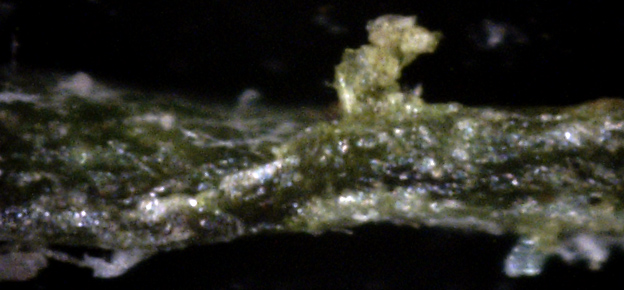
14
While slicing the leaf with a razor to obtain this cross-cut, a portion of leaf
tissue containing 4 buried spores was partially torn off the top surface. (400x)
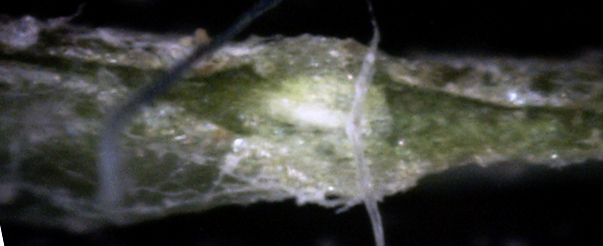
15
This leaf cross-section exposed a patch of white canker hiding right in the
middle of the leaf, causing a slight bulge of both surfaces. Note the long hypha
in the foreground looping around this canker. (400x)
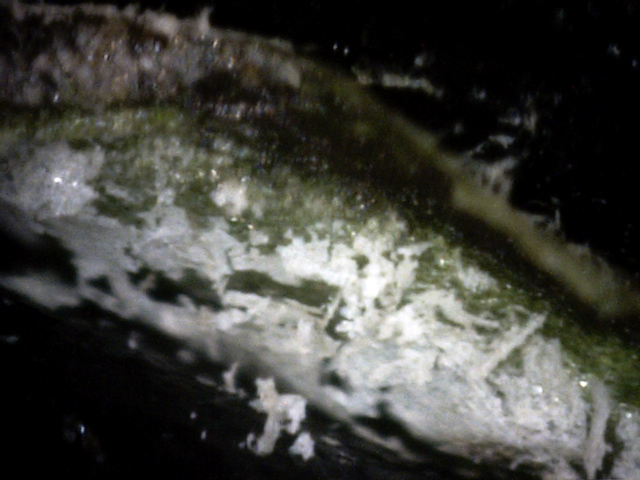
16
Here we see a leaf cross-section that has an extensive amount of white canker
material growing on it. (400x)
White Canker on lilac leaves shows itself as leaves that are appear very dry, dull,
and cupped - as if starving for water. Eventually these leaves curl up, turn black,
and die. For comparison, here is a microscopic picture of a twig stem and both sides
of a leaf.
In contrast to the above, I found another lilac leaf that was somewhat wrinkled and gray,
but without insect damage. As you can see in the following picture set,
the microscopic views are far different!
With all this infection taking place, the bark has a hard time maintaining itself,
and lots of disease organisms move in to take advantage of the situation,
as shown in the following pictures.
